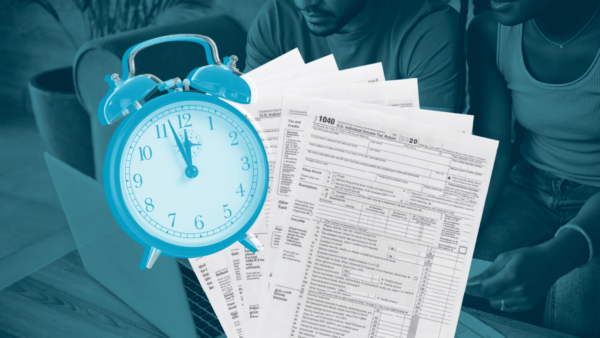Oct 24, 2017
Budgeting for Millennial Newlyweds: A Step-by-Step Guide

It’s easy to get distracted by the excitement of your wedding. But now that the gifts are unpacked and the thank-you notes are in the mail, it’s time to sit down with your spouse and talk finances (if you haven’t done so already).
Making the switch from personal finance to family finance can be a tricky transition for even the most financially-savvy newlyweds. The good news: Budgeting with your spouse can help make the adjustment a little easier and ensure you tackle your new finances as a team.
To help you get started, here’s a quick guide budgeting guide for newlywed Millennials.
Step 1. Planning Housing Costs
Millennials are the largest generation of adults, yet they account for only 7.5% of the value of all U.S. homes. The reason? Many Millennials face staggering student loan debt, lower employment levels, smaller incomes and lack of affordable starter homes, which leaves them with little money (and confidence) to get into the housing market. As a result, most Millennials rent their homes.
Whether your rent or own, housing usually accounts for the single largest chunk of your budget. As a renter, you should aim to spend no more than 30% of your gross income on rent. If you and your spouse make $6,000 (combined) each month, for example, you should aim to spend $1,800 or less. Alternatively, if you’re one of the 35% of Millennials who owns a home, your total mortgage should be no more than 28% of your gross monthly income. But these recommendations change if you have a high debt load – which you probably have if you’re like most Millennials.
Step 2. Taking Care of Your Recurring Monthly Debt
If you’re servicing a lot of debt, it’s important to keep your combined housing costs and monthly debt payments below 43% of your income. This is a good guideline whether you rent or own your home, and it happens to be the highest debt-to-income ratio (DTI) you can have and still get a qualified mortgage.
To calculate your DTI, add up all your recurring monthly debt payments (rent/mortgage, student loans, car payment, minimum credit card payment) and divide that sum by your monthly income. There are a couple ways to reduce your DTI (sorry, neither is easy). First, you can lower your recurring monthly debt by refinancing existing loans, paying down debt and – this is the important one – stop accumulating more debt (think before you buy). You can also lower your DTI by increasing your gross monthly income – either by working overtime, picking up a second job or asking for that long-overdue raise.
In general, aim to spend about 10% and 20% of your income on student loans and another 10% to 20% for all your auto expenses (including car payment, gas, insurance and maintenance).
Step 3. Set a Retirement Account as Soon as Possible
Even if you’re fresh off your honeymoon, it’s not too early to start thinking about retirement – specifically, how you and your spouse are going to fund those golden years. As a Millennial, you have a huge advantage when it comes to saving for retirement: Time. If you start saving early (now), you can take advantage of compounding – what Einstein called the eighth wonder of the world.
Compounding is the reinvestment of earnings, and time is its superpower. If you make a single $10,000 investment when you’re 20 years old that grows at a conservative 5% each year, it would be worth nearly $90,000 when you retire at age 65. If you wait until you’re 40 to make that same investment, it would be worth less than $34,000. Sooner is better when it comes to building wealth and getting ready for retirement.
An IRA (individual retirement account) is an easy to way to get started. IRAs are tax-advantaged retirement plans that help you build a nest egg. There are two main types of IRAs – traditional and Roth – and a big difference between the two is when you get to claim a tax break. With traditional IRAs, you avoid taxes when you put money in and pay taxes when take money out. Roth IRAs are the opposite. You avoid taxes when you take money out and pay taxes when you put money in.
Keep in mind, IRAs are individual retirement accounts – meaning you and your spouse should each have one (there are no joint IRAs). The contribution limits are the same whether you have a traditional or Roth IRA: you and your spouse can each contribute up to $6,000 each year. Imagine how that could grow with the power of compounding.
A good goal to aim for is to set aside 10% to 15% of your income for retirement each month, starting in your 20s. And if you can save more – go for it.
4. Set a Plan for Big Purchases (and Big Events)
If you want to save for something big like home down payment or having a baby, it’s helpful to make a plan. To start, figure out an appropriate financial goal and determine your time horizon. Next, do the math to figure out how much you need to save each month to make it happen.
Here’s an example. Say you and your spouse want to buy and house. After some research, you find out you’ll need $20,000 for a down payment on a house in your price range. You hope to buy your first home in three years, so you’ll need to save $555 a month to reach your goal ($20,000 / 36 months). If that’s not realistic, push it out a year so you have more time to save.
The key is to make saving a habit and – better yet – make it automatic. One way to do that is to use an app like Stash, which helps you invest automatically each month in your choice of ETFs. Stash assess your risk profile and recommends you investments that match your financial goals. You can fall into conservative, moderate or aggressive, depending on your risk profile. Downloading the app is free for iOS and Android users, you can also sign-up here.
5. Commit to Responsible Budgeting
We know that finances are stressful and planning for retirement seems like something that can wait. The truth is, however, you’ll be much better off financially – now and in the future – if you have the money talk with your new spouse today, make a budget and stick to it. If you make saving and investing a habit, it will be easier to live without the money you’re setting aside. Chances are, you won’t even miss it.
A few things in particular can help you stick to your budget:
- Make a conscious effort to spend less. It’s really easy to spend money on things you don’t need. Before you buy something, ask yourself, “Is this something I really need? Do I already have something that can work in its place?”
- Watch out for lifestyle inflation. People usually spend more money if they have more money to spend. As your salary increases, you might feel justified in spending more on an expensive car, swankier apartment or designer clothes. While this can be fun and exciting, it’s a great way to derail your plans for building wealth. Take note: Warren Buffett (you know, one of the richest people in the U.S.) famously lives in the same house he bought in 1958 for $31,500. Just because you’re making more, doesn’t mean you need to spend it foolishly.
- Make a commitment. Budgeting takes time and effort – and a lot of willpower. Talk with your spouse, make a plan, put it in writing and make it happen.
6. Get your budgeting plan started
Once you’ve committed, getting started is easy. Stash is one app for all your investment and saving needs. Just connect your bank account. You can create a unique, risk-appropriate and diversified portfolio to get you towards bigger goals, like your child’s college education or a down payment on a home. Want to open an IRA? You can do that on Stash too.
Want to know more about Stash?
See what some of the biggest financial publishers are saying about us.
- Is It Safe to Get Excited About Investing Again? — Bloomberg News
- How to get started investing…for $5 — CNNMoney
- Stash raises $40 million Series C to make Investing more approachable — Techcrunch
- How $5 and the Stash App Turned Me Into an Investor — Kiplinger
Related Articles

How to Start a Roth IRA: A 5-Step Guide for 2024

What Is a Traditional IRA?

How Much Do I Need to Retire: A Guide for Retirement Saving [2024]

Roth vs. Traditional IRA: Which Is Best for You in 2024?

How To Plan for Retirement

Why It Can Pay to File Your Taxes Early




